
It is held on March 2nd. That date was chosen in honor of the most popular author of books for children, Dr. Seuss.
For that is his birthday. The event encourages both children and adults to embrace reading throughout the year.

Often a parent will come to the classroom to read a book to the class. In past years a popular choice for this was one of the books by Dr. Seuss. Snacks and other foods, sometimes Green Eggs and Ham were served.
A big part of the fun had been the wearing of hats just like the one worn by The Cat in the Hat.
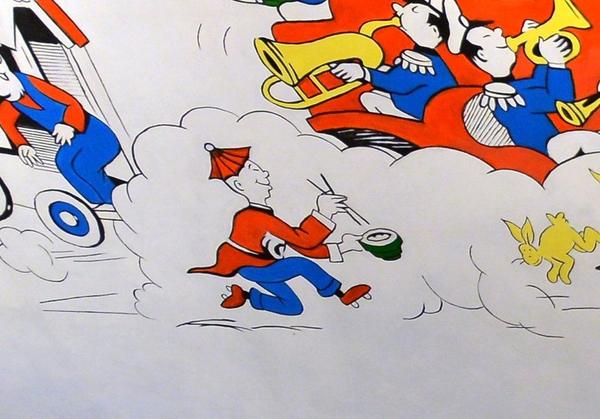
This is because of the recent push for more diversity along with the fact that Seuss Enterprises announced that they would no longer publish six of his books.
They stated These books portray people in ways that are hurtful and wrong. So, this author has decided to find out more about Dr. Seuss.

In college at Dartmouth, he put his talents toward the campus humor magazine. In his senior year at college, with prohibition intact, he was caught drinking alcohol. School authorities ruled that for punishment he could no longer be involved with the campus magazine. But he secretly defied their order publishing cartoons under the pseudo name Seuss which was his middle name and the maiden name of his mother. Thus his alter ego was born. He would add Dr. a few years later.
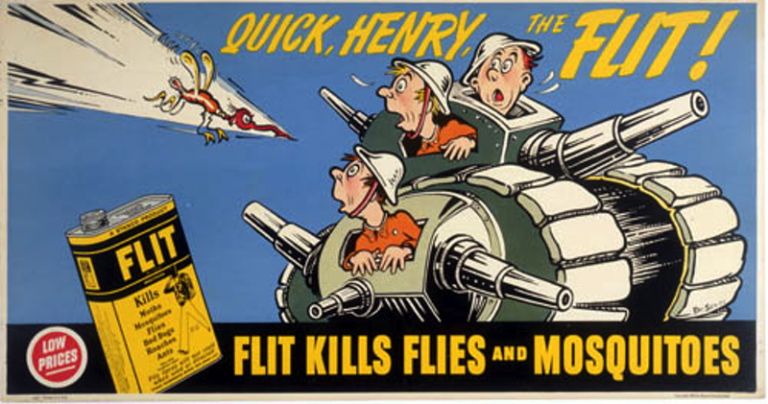
His big break came when one of his cartoons comically mentioned the insecticide of the era - Flit. The company saw the cartoon and hired him to design their ads. He came up with a slogan Quick Henry, the Flit and artwork to go with it.
This advertising campaign let to a tremendous increase in the sales of the product. Ted Geisel / Dr. Seuss became a well-paid respected advertising man who was sought after by many.

His first venture would be based off a busy street in his hometown of Springfield, Mulberry Street. The book And to Think I Saw It on Mulberry Street is about a boy imagining a plain horse and buggy becoming a magnificent chariot. It was a modest success.
A few other books followed, including Horton Hatches the Egg in 1940. While he received critical acclaim, by no means were his books top sellers at this time.
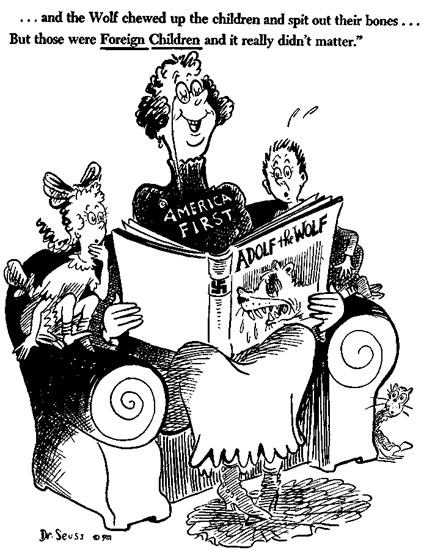
These cartoons are fascinating to look at today as one easily recognizes that the characters are indeed Dr. Seuss creations, but instead of Sam-I-Am and the Cat in the Hat, we see Uncle Sam and Hitler.
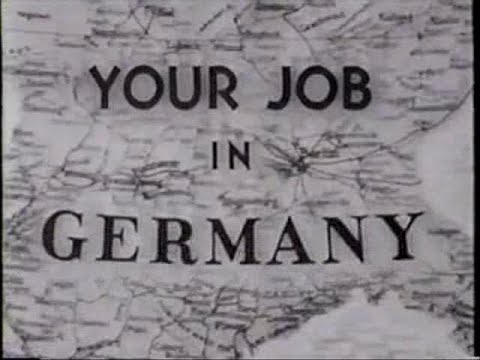
At age 38 he was deemed too old for fighting and was assigned appropriately to a unit that created training films for the soldiers.
One of the films he produced was instructions to the soldiers about the upcoming occupation of Germany. To obtain approval for this film from the Generals he was sent overseas to Europe.
One day in December 1944 a surprise German attack, in what came to be known as the Battle of the Bulge, stranded him behind enemy lines. Three days later he would be rescued by British troops.
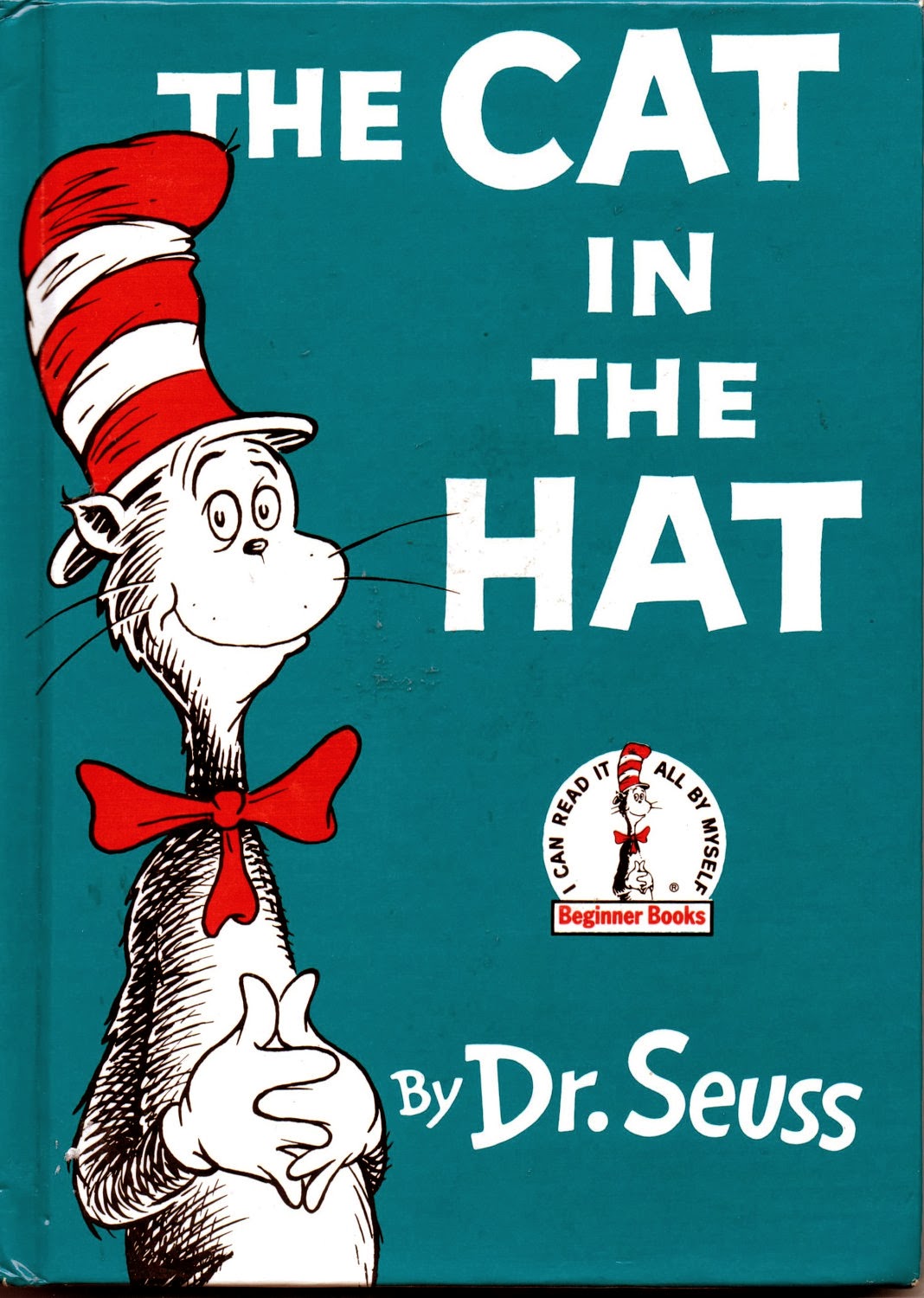
A concern of the educators back then was that kids had very little enthusiasm for reading. The books used in the public schools were from a series entitled Fun with Dick and Jane. But these boring books were no fun at all.
So, Dr. Seuss set out to write a book that kids would want to read. After many months, Dr. Seuss came up with the wording and artwork of his masterpiece The Cat in The Hat. This book became an immediate best seller. The success made it clear that books that were fun would motivate kids to read.
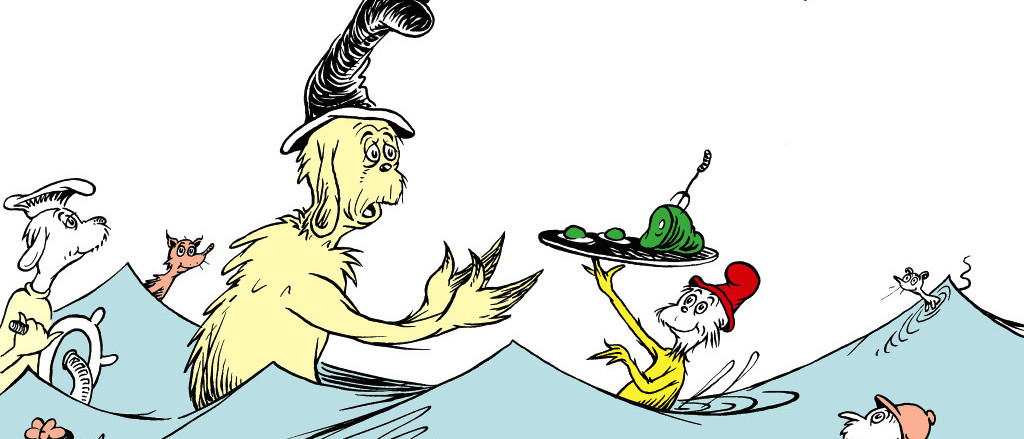
In 1960 his best seller of all-time Green Eggs and Ham would be published.
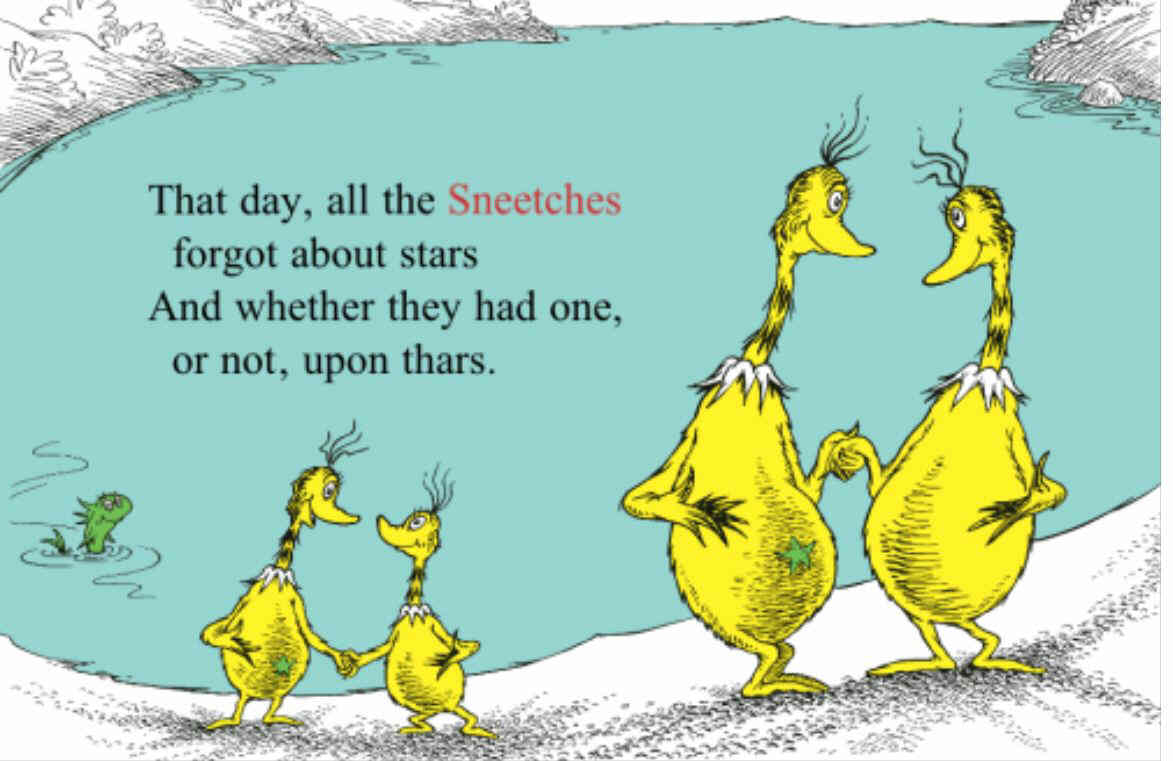
The Sneetches (1961) is a story about a group of creatures called Sneetches. Some of them have stars on their bellies and some do not. The ones with the stars on the bellies consider themselves to be the best group.
One day an enterprising hustler visits town with a machine that can, for a fee, put stars on the bellies of any Sneetch who wants it. Soon all the Sneetches would have stars on their bellies. But then the hustler announced that the new trend was that it would be best not to have a star. Thus, the hustler, once again for a fee, offers to remove the star. The Sneetches then continuously have their stars removed and put back on in response to whatever was trendy. When they all run out of money, they finally realize that it does not matter who has a star on their belly and who does not, but it is the content of the character of the Sneetch that is most important.
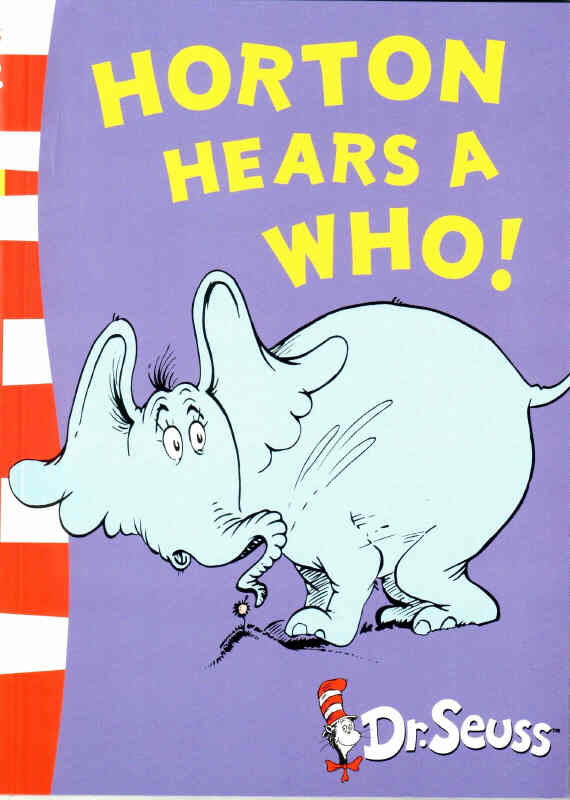
The Lorax (1971) promotes environmental conservation.
The Butter Battle Book (1984) is a satire on the arms race of the cold war.

It is often read at graduation ceremonies and given as a graduation gift. Fittingly it was his last book. Dr. Seuss passed away in 1991 at the age of 87.

This author read three biographies on him and found that there was little to no mention that anything in his books was ever considered hurtful.

The Barnes and Noble in Bridgewater has seen a big surge in sales of the Dr. Seuss books.